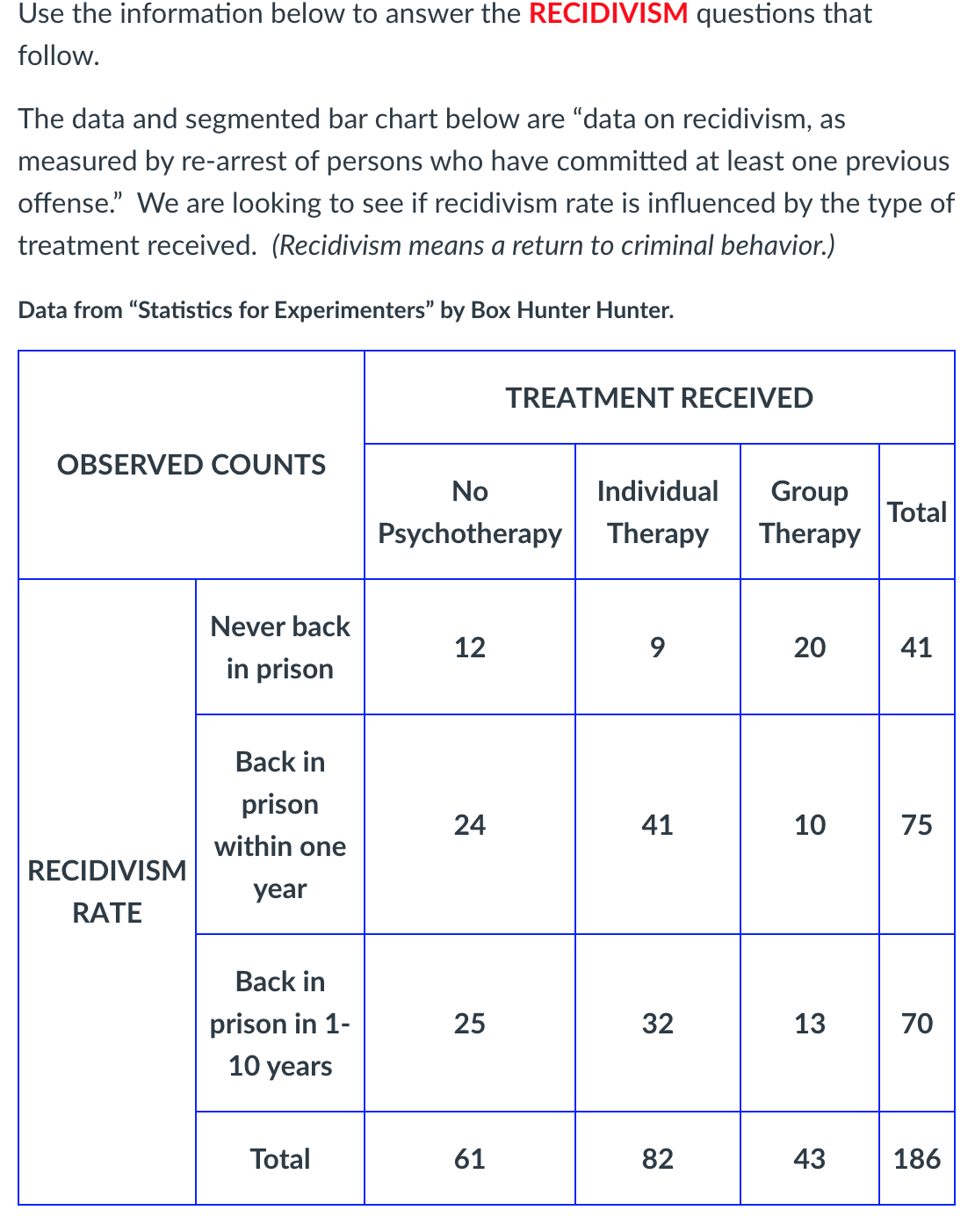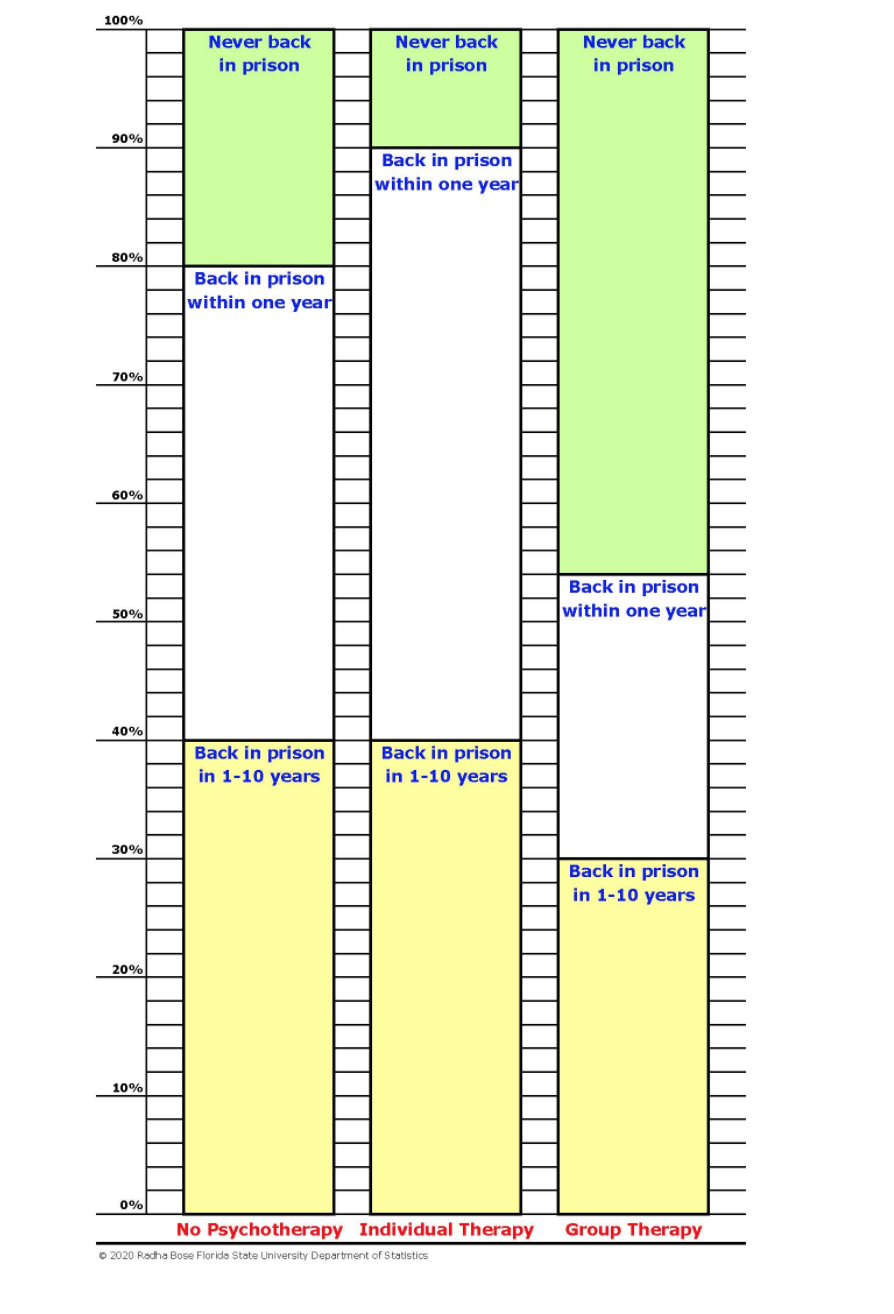RECIDIVISM Use the segmented bar chart to help you choose the BEST options to create a true statement: The break-up of [ Select ] ["predictor", "horizontal bars", "observed counts", "recidivism rate", "treatment received", "vertical bars", "offenders", "response", "expected counts"] within each category of [ Select ] ["vertical bars", "offenders", "horizontal bars", "treatment received", "predictor", "expected counts", "response", "recidivism rate", "observed counts"] [ Select ] ["is not", "is"] approximately the same, so our initial guess is that [ Select ] ["observed counts", "offenders", "vertical bars", "predictor", "treatment received", "expected counts", "horizontal bars", "recidivism rate", "response"] [ Select ] ["does not", "does"] influence [ Select ] ["response", "horizontal bars", "observed counts", "vertical bars", "recidivism rate", "predictor", "expected counts", "offenders", "treatment received"] .
RECIDIVISM
Use the segmented bar chart to help you choose the BEST options to create a true statement:
The break-up of [ Select ] ["predictor", "horizontal bars", "observed counts", "recidivism rate", "treatment received", "vertical bars", "offenders", "response", "expected counts"] within each category of [ Select ] ["vertical bars", "offenders", "horizontal bars", "treatment received", "predictor", "expected counts", "response", "recidivism rate", "observed counts"] [ Select ] ["is not", "is"] approximately the same, so our initial guess is that [ Select ] ["observed counts", "offenders", "vertical bars", "predictor", "treatment received", "expected counts", "horizontal bars", "recidivism rate", "response"] [ Select ] ["does not", "does"] influence [ Select ] ["response", "horizontal bars", "observed counts", "vertical bars", "recidivism rate", "predictor", "expected counts", "offenders", "treatment received"] .


Trending now
This is a popular solution!
Step by step
Solved in 2 steps


